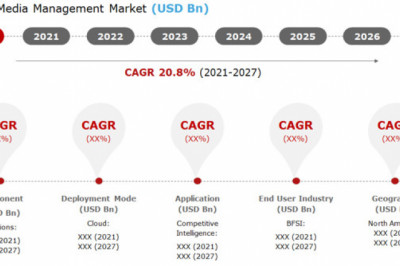views

A botnet attack is a cyber attack conducted by a group of interconnected devices which are connected to the internet. As always these devices are controlled by cyber criminals and hackers. Those who do not know what a botnet is, it is basically a network of devices connected with other devices on an internet network. it is through these devices that malware is injected by hackers in an internet network to make a base for a large scale and well planned cyber attack.
For what purpose are botnet attacks used for?
Botnets attacks are often used for data theft, stealing confidential information, sending spam through multiple means, continuous ad fraud and lastly, for carrying out Distributed Denial-of-Service (DDoS) attacks.
The difference between typical bot attacks and a botnet attack
In comparison to a bot attack, botnet attacks are different. The latter is a cyber attack which makes use of automated web requests. The intention of these requests is to damage a website, a web app, a mobile app, a device or all of them.
In the beginning, bot attacks comprised of simple operations aimed at spamming networks. Today, they have evolved and become more complicated than they were before. The intention of most bot attacks is manipulating users into getting swindled and stealing user information. The availability of open-source tools for making bots (known as bot kits) is a reason these attacks are taking place on a monumental scale.
Bot kits are available on the dark web without a price tag. They are used for making bots which are used for carrying out tasks like taking over user accounts, extracting information by attacking websites, taking wrong advantage of form submissions and of course, conducting botnet attacks (especially DDoS ones).
The Modus Operandi of a botnet attack - how does it work?
A botnet attack begins with hackers obtaining access to devices on a network through hacking by injecting trojan viruses in the system. Another way to do so is deploying malicious tactics of social engineering. Afterwards, software is used by hackers to control these devices for carrying out large scale attacks.
There are cases where hackers may not use botnets to conduct these attacks. What they do instead is they sell the network access to other hackers and cyber criminals for a price. Then the people who purchase this network access use it to create a zombie network to fulfill their own hacking desires, especially launching spam campaigns.
The different kinds of botnets attacks present
Experts from a DDoS Protection service provider based in North York explain that different kinds of botnet attacks exist based on their operational mechanisms and tools used. At times, botnets become a channel and means for cyber criminals to launch secondary attacks (among them being ransom attacks and scams).
Here are some common types of botnet attacks that have taken place so far:
DDoS attacks (Distributed Denial-of-Service)
Ranked among the most common kinds of botnet attacks, this works when when attackers start overloading servers with web traffic full of bots. The intention is to crash these servers. The downtime of these crashed servers hence becomes a cover for launching more botnet based attacks.
Phishing attacks
Phishing attacks are usually launched for extracting critical information from corporate employees. A fine example of this is a large scale spam campaign using emails which imitate trusted sources in an organization. This tricks employees into revealing confidential information such as log-in credentials for certain portals and web apps (mostly usernames and passwords), credit card details, business secrets and financial information.
Brute force attacks
These attacks involve usage of programs that can breach web accounts forcefully through credential stuffing and dictionary attacks, which exploit weak usernames and passwords.
What are the ways for companies to prevent botnet attacks?
With time, prevention of botnet attacks became quite a difficult task. Among the biggest challenges in this regard is the proliferation of various kinds devices where each device has its own security setting. With different kinds of devices available, the security setting of each gives attackers a new avenue for disguising their attacks.
It is due to the variety in security settings of these devices that attackers make it difficult for authorities to detect, track, monitor and stop these attacks in their tracks. But there are some certain measures that each firm and authority can deploy to stop these attacks from happening:
● All systems and security systems are updated regularly.
● Adopting best practices in cybersecurity at all levels.
● Controlling access to computers and devices.
● Making use of top-notch analytics solutions to monitor web traffic.












